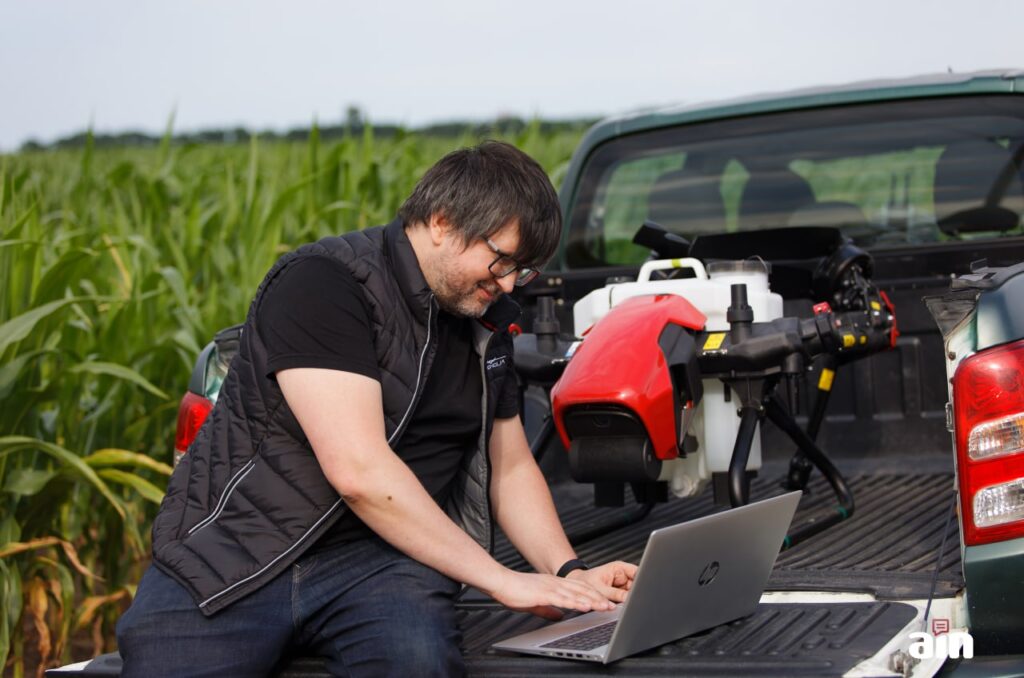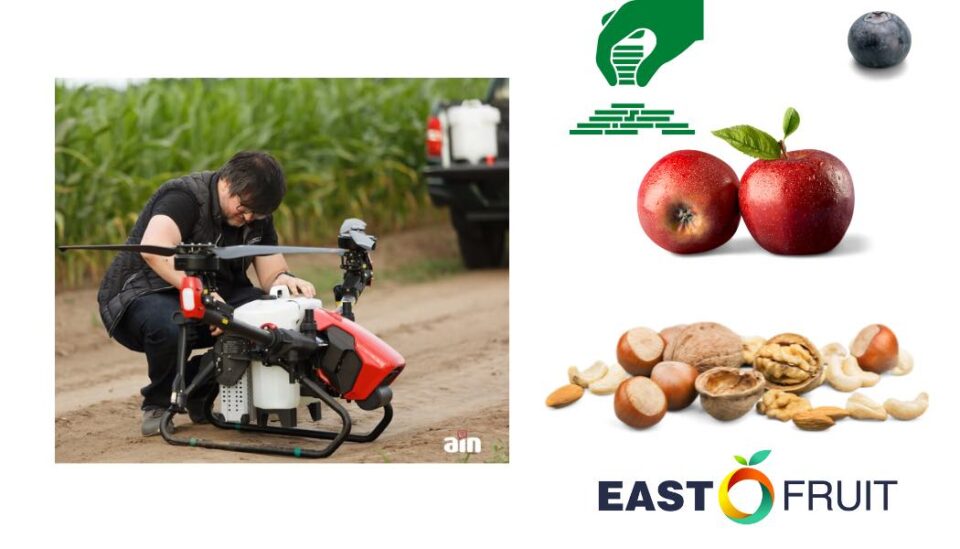“All robotic equipment is designed to make work easier, use time efficiently and automate any processes that can be automated. That is, the person remains in charge, while the robot or drone does the work,” notes Valeriy Yakovenko, co-founder and managing partner of Drone UA (Ukraine).
On the eve of the webinar “Unmanned technologies in horticulture: Opportunities for their use in Eastern Europe and Central Asia”, where Valeriy Yakovenko will be one of the speakers, EastFruit discussed agribusiness robotization with Valeriy.
The EastFruit international platform, supported by the Food and Agriculture Organization of the United Nations (FAO) and the European Bank for Reconstruction and Development (EBRD), in collaboration with Sapienza Media, is launching a series of webinars in September 2022 where leading experts from the region will talk about trends, technologies and benefits of digitalization of farming, as well as opportunities to use the latest technological advances to increase the profitability of horticulture and reduce environmental impact.
The first webinar “Unmanned technologies in horticulture: Opportunities for their use in Eastern Europe and Central Asia” from the #EastFruitHortiTech series will focus on the benefits of agro-drones in horticulture. It will be held on September 27, 2022, on Zoom and will start at 10:00 Kyiv and Chisinau time, 12:00 Tbilisi time and 13:00 Tashkent time.
The webinar will be of interest to producers of fruits, vegetables and nuts, agronomists and service providers. Participation in the online event is free of charge subject to mandatory pre-registration. You can register at the link.

The cost of a drone may even pay off in 1 flight or in one application of plant protection products
“We see how robotization influences agricultural production. The young population is returning to the rural areas to start working in fields using modern technologies. The trend is noticeable – more and more Ukrainian agricultural producers are starting to work with the latest technologies. They see from their own experience that investments in drones pay off very quickly, sometimes even during one season, and sometimes even in 1 flight or 1 application of plant protection products.
Therefore, this is a relief for business. And if we compare buying a drone/robot or hiring seasonal workers, hiring services is more economically profitable, and it is a global trend,” says Valeriy Yakovenko.
According to Valeriy, the history of robotics in agriculture is also a story about services, when more and more service companies are being created so that farmers do not spend capital investments on the purchase of equipment and on the maintenance of personnel who will not work 10 months a year. This means there is a paradigm shift in agribusiness right now. “We are not talking now about the purchase of very expensive equipment by farmers, but about creating huge fleets of those who use robots in their work in the regions of our country and around the world. It’s profitable, fast, economical, and it’s a solution to many issues,” he notes.
Robotization solves a number of issues. Firstly, the issue of human resources and of capital investment. There is a transformation to a service model – higher yield is obtained, water, fuel and plant protection products are saved, because they can be applied in less quantity. And this is a positive impact of robotics on the economic component of agribusiness.

Ukraine is a leader in the use of innovations in agribusiness
Valeriy Yakovenko draws attention to the fact that drone activity in Ukraine is regulated by several legislative acts. One piece of legislation regulates the de facto use of airspace by. The other one regulates the use – for example, the use of pesticides in agriculture, where drones are considered as an application tool, separated from classical aviation and aerial sprayings. They have been submitted to the Verkhovna Rada either as drafts for voting that have passed certain committees, or as bills currently under consideration by relevant committees.
I would say that Ukraine has one of the best legislative and legal framework in drone technologies, and this is probably one of the reasons why Ukraine is leading in the use and integration of such technologies.
If we are talking about limiting the use of drones for Ukrainian farmers since the start of the war, drone flights and the use of airspace by all players except the military, that is, helicopters, airplanes, classical aviation, are prohibited. In this case, in agribusiness, you can get permission to use drones.
Drones in agriculture are extremely important for the economic component, and the Ministry of Agrarian Policy helped with the formation of the agenda, communicated through the military administrations, to set up the system of obtaining temporary permits for drone work. Drones fly low, they are very large and visible, they work in limited areas only over crops and fields, and do not pose a threat to our security or the military.
To obtain such permits, you need to spend time and additionally apply to the regional military administrations.
As for the rules for farmers on using drones in Europe and Ukraine, it should be borne in mind that Ukrainian legislation is more flexible, and more responsive to the introduction of new technologies. As for similar markets in the EU, they are smaller, less dynamic, and they are behind the curve. Regulation in most countries is more complicated than in Ukraine, but each country is different, so when you operate in the EU countries or other foreign markets, you need to consider local rules. In some places, you need to take mandatory courses or pass exams and tests to obtain a pilot’s certificate. In some countries, you need to be more careful about restrictions on the use of drones, since some regions are prohibited from flying, thus you need permission.
The recommendation remains to always check the local rules, especially the websites of state bodies on the use of drones. If you work with drones in agriculture, specifically with spraying drones, all responsibility for the action of the substances used must be transferred to the customer. He must be responsible for the quality of application and minimal risks to the environment.
Drones are just a tool – very efficient, cool and progressive, but still just a tool.
Responsibility for the action of the substances used is always on the agronomist who uses them, and it is important to make sure that he professionally performs this work – both in terms of weather conditions and the rate of application of the active substance.
Valeriy Yakovenko will talk more about restrictions on the use of drones in the countries of the region during the webinar “Unmanned technologies in horticulture: Opportunities for their use in Eastern Europe and Central Asia” by EastFruit.
YOU CAN REGISTER FOR THE EVENT HERE.
The use of the site materials is free if there is a direct and open for search engines hyperlink to a specific publication of the East-Fruit.com website.




